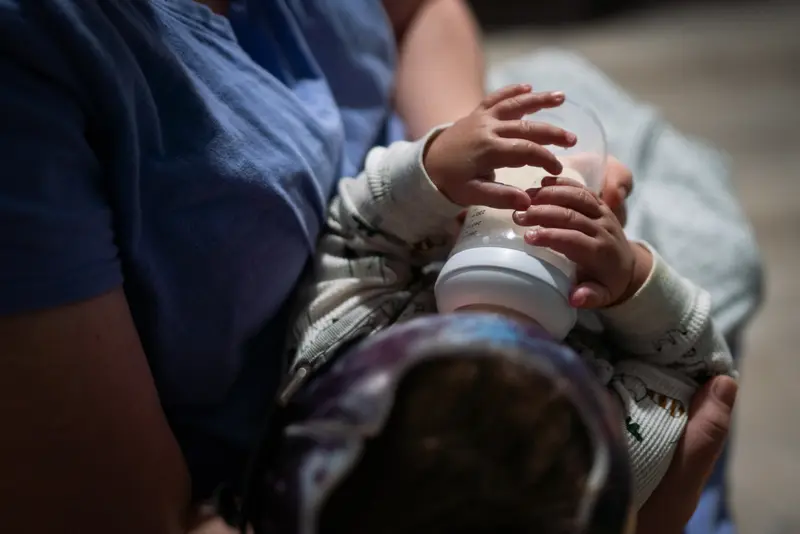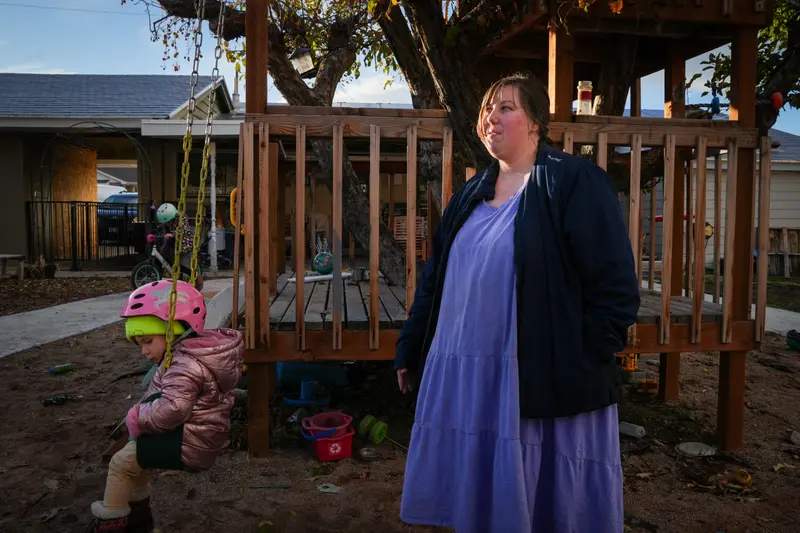Aleatha Child struggled to keep her Brigham City, Utah, day care open after federal funding meant to mitigate the effects of the COVID-19 pandemic ended last September. She raised the fees she charged families and let an employee go.
She put some hope in the Utah legislative session. But instead of providing day cares like hers with more money, lawmakers expanded a child tax credit in a bill that also allows unlicensed care providers to take in more children.
Child concluded that her child care license could soon be useless and decided her day care will close at the end of the month.
“I’ve thought long and hard about this, I love this job and love my families but this is what’s best for my family and they come first,” she wrote in a social media post in mid-February.
Utah’s Republican-dominated Legislature adjourned this month after passing a record 591 bills during its session. Lawmakers earmarked nearly $2 billion in tax subsidies to build an MLB stadium and an NHL arena. They doubled funding for the state’s school voucher program. And they cut the income tax rate.
But they made no direct financial investment in child care, despite the end of federal pandemic relief, which since 2020 had sent nearly $574 million to Utah’s Office of Child Care for various programs.
The bill that lawmakers passed loosens regulations on unlicensed care for the second time in two years by increasing the number of children a provider can care for in their home from six to eight, if none of them are related to the caregiver. (There’s a cap of 10 total kids if some of them are related to the provider.) No more than two of them can be under 3 years old.
Some parents and providers criticized that move as potentially unsafe. In response, lawmakers added a background check requirement for all unlicensed providers, but it’s unclear how that will be enforced.
“We have two problems with child care that we hear about a lot,” Rep. Susan Pulsipher, a Republican, told a House committee. “One is the cost and one is capacity.” The tax credit could help with the cost, she said, and unlicensed providers caring for more children could boost capacity. The new rules are “a tool” that will give parents more choices. She said parents can ask about background checks and any training unlicensed providers might have received.
But licensed providers told ProPublica that the legislation devalues the licenses obtained by in-home care providers whose homes are inspected, who obtain CPR and first-aid training, and who abide by rules such as checking on babies while they’re sleeping.
The new bill, which takes effect May 1, will make Utah one of the most lenient states toward unlicensed child care. Only South Dakota allows more children in an unlicensed day care — up to 12 — according to research into state child care plans compiled by the Committee for Economic Development, a nonpartisan group of business leaders.
Bill Cosgrove, a retired pediatrician and advocate for early childhood education, said in an interview with ProPublica that leaving so many children in the care of one adult can hamper their development.
“It’s the definition of neglect,” said Cosgrove, who testified in Senate and House hearings on the bill.
Child care advocates, parents and providers asked Gov. Spencer Cox, a Republican, to veto the bill, but Cox signed it March 14.
A recent investigation by ProPublica found that though Utah bills itself as the most “family friendly” state in the nation, it does too little to ensure that care for children of working parents is accessible and affordable. Numerous researchers have detailed the lack of available child care in the state. A 2020 report by the state’s Office of Child Care found that Utah’s child care capacity was meeting only 35% of its needs. A 2018 analysis found that a larger proportion of people in Utah live in areas with few or no licensed child care facilities than in any other state.
After the state received the federal relief funding in 2020 and 2021, the number of licensed child care slots rose by about 30% over two years, according to a report by Voices for Utah Children, a children’s advocacy group.
In January, nonprofits, businesses and child care providers penned an open letter to lawmakers asking them to invest in child care. “Without government investment, families are left with low-quality options that endanger children, and disincentivize providers. We are calling on the Utah Legislature to invest more dollars into the childcare industry. With cross sector collaboration between business, the philanthropic community, and government entities, we can address this crisis and become a model for the nation,” they stated in the letter.

House Speaker Mike Schultz, a Republican, told reporters in February that funding should be part of Utah’s solution to the child care crisis, but it wasn’t lawmakers’ first priority.
“We have to focus on the supply, and then you can focus on the funding,” Schultz said.
Proponents of the bill said that it offers more choices for parents. Nicholeen Peck, president of the Worldwide Organization for Women, a conservative faith-based group, testified in favor of the legislation. Peck said that her mother cared for five children on her own. The bill would allow someone like her mother to potentially care for five more, which is “not that many.”
“I think it also opens the door for really great people in the community to be able to offer their services more so that people don’t have to be just randomly dropping their children off at somebody that they don’t know,” she said.
At least one study shows the bill is likely to be ineffective at boosting supply. According to an August 2022 policy brief by the National Association for the Education of Young Children, a nonprofit that represents educators and issues accreditations, there’s no correlation between regulations and child care supply. “Efforts to loosen regulations, driven by a goal of increasing supply and program revenue, will actually have the opposite effect by driving educator burnout and turnover even higher,” according to the policy brief.
“It’s already a stressful job,” said Anna Lovejoy, acting senior director for early childhood policy at the Center for American Progress, a left-leaning public policy group that worked on the brief. “So when you add more children to the mix, it actually can lower morale and increase provider turnover, which is not good for quality because you need those stable and consistent relationships with caring adults to support the children’s development.”
Utah’s Department of Health and Human Services, which oversees licensing and background checks, said in a statement that it is “working through the details” on how to administer the required background checks.
Enforcing the requirement will be difficult unless there’s a “tattletale system,” said Jamie Bitton, the owner of a child care center in Ogden, Utah, and the president of the Utah Private Child Care Association. “There’s no minimum safety precautions for someone just to babysit children in their homes,” she said. “And it’s scary.”
Child, the day care operator who is closing her business, said as a licensed provider she’s been subject to announced and unannounced visits by state inspectors. And she’s taken numerous trainings on child development in order to maintain her license.
“They’re trying to solve a problem, but I feel like they’re going to make it worse,” Child said. “We can live without stadiums, but as long as we have children and need to work, we cannot live without child care.”
March 19, 2024: The story overstated the number of children South Dakota allows in unlicensed day cares. The state allows up to 12 children in such day cares, not 13.





